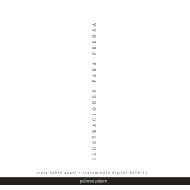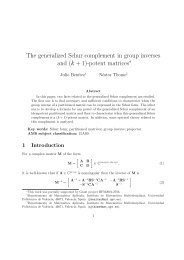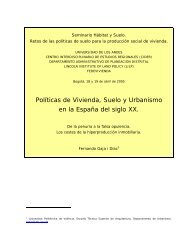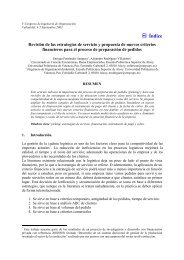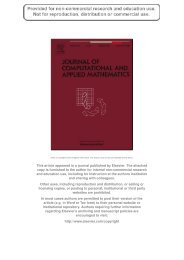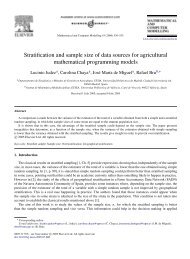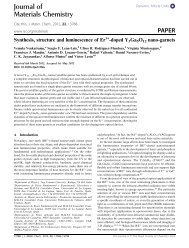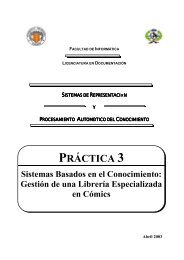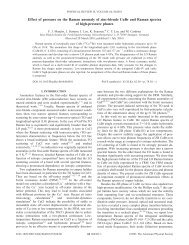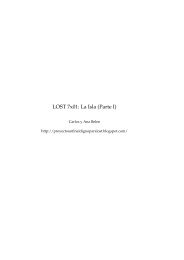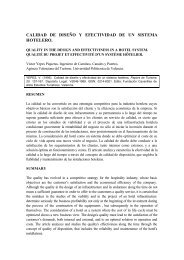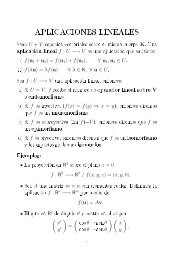Introduction to the resistivity surveying method. The resistivity of ...
Introduction to the resistivity surveying method. The resistivity of ...
Introduction to the resistivity surveying method. The resistivity of ...
You also want an ePaper? Increase the reach of your titles
YUMPU automatically turns print PDFs into web optimized ePapers that Google loves.
29<br />
same depth with more data points in <strong>the</strong> pseudosection plot (Figure 21c). This phenomena is<br />
basically due <strong>to</strong> <strong>the</strong> shape <strong>of</strong> <strong>the</strong> con<strong>to</strong>urs in <strong>the</strong> sensitivity function <strong>of</strong> <strong>the</strong> dipole-dipole array<br />
(Figure 8c). This example illustrates <strong>the</strong> danger <strong>of</strong> only using <strong>the</strong> distribution <strong>of</strong> <strong>the</strong> datum<br />
points in <strong>the</strong> pseudosection <strong>to</strong> constrain <strong>the</strong> position <strong>of</strong> <strong>the</strong> model blocks (Loke and Barker,<br />
1996a). If <strong>the</strong> model blocks are placed only at <strong>the</strong> location <strong>of</strong> <strong>the</strong> datum points, <strong>the</strong> high<br />
<strong>resistivity</strong> body will be missing from <strong>the</strong> inversion model, and an important subsurface<br />
feature would not be detected!<br />
Figure 21. (a) Apparent <strong>resistivity</strong> pseudosection for <strong>the</strong> survey <strong>to</strong> map holes in <strong>the</strong> lower clay<br />
layer. (b) Inversion model and (c) sensitivity values <strong>of</strong> <strong>the</strong> model blocks used by <strong>the</strong> inversion<br />
program.<br />
2.7.7 Magusi River Ore Body - Canada<br />
This is an example <strong>of</strong> a combined <strong>resistivity</strong> and induced polarization (I.P.) survey.<br />
This survey was conducted over <strong>the</strong> Magusi River ore body where dipole spacings (<strong>the</strong> “a”<br />
fac<strong>to</strong>r in Figure 2) <strong>of</strong> 30.5 meters (100 feet), 61.0 meters (200 feet) and 91.4 meters (300 feet)<br />
were used (Edwards 1977). For each dipole length, measurements were made with values <strong>of</strong> 1<br />
<strong>to</strong> 4 for <strong>the</strong> dipole separation fac<strong>to</strong>r “n”. <strong>The</strong> I.P. measurements were given as metal fac<strong>to</strong>r<br />
values. <strong>The</strong> resulting <strong>resistivity</strong> and I.P. pseudosections have a very complex distribution <strong>of</strong><br />
Copyright (1999-2001) M.H.Loke



